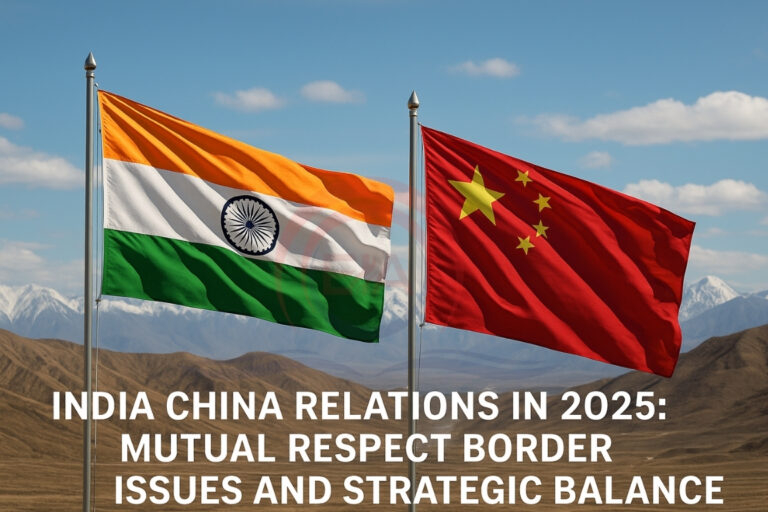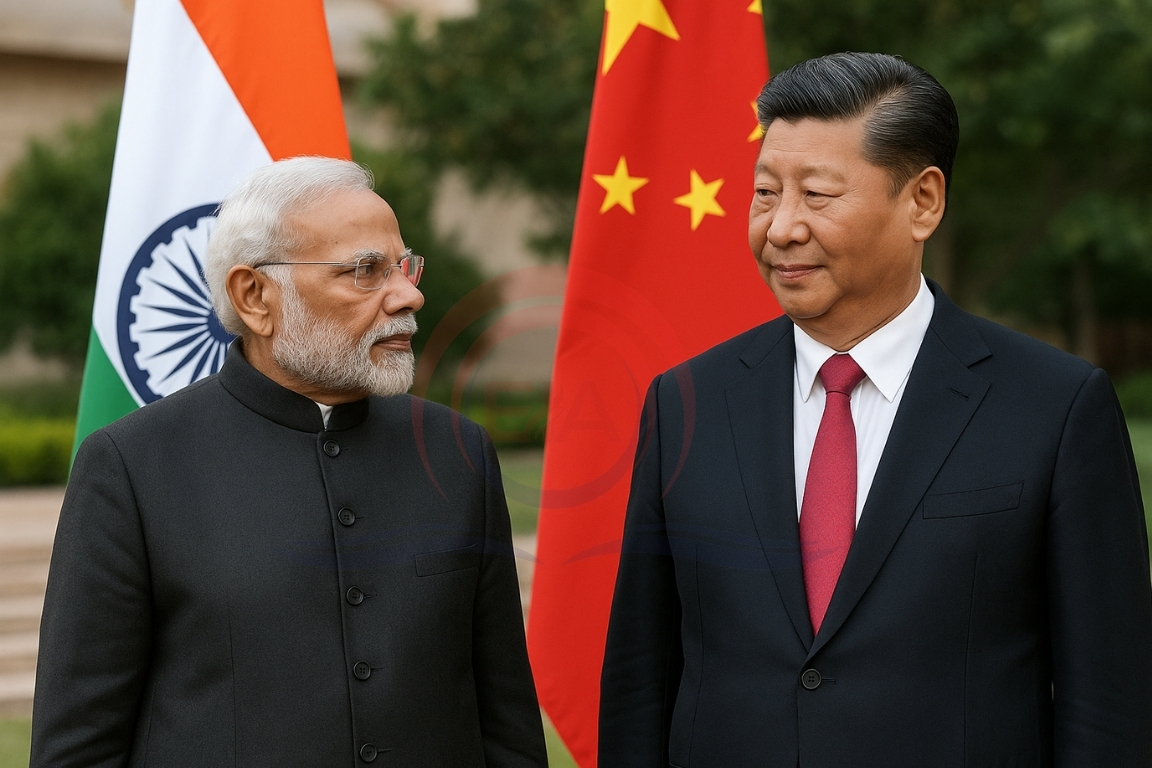The editorial discusses the current state of India-China relations in 2025, emphasizing the need for mutual respect, clarity on core concerns, and careful handling of disputes to ensure regional stability.
Background and Significance
- India and China are Asia’s two major powers whose relationship influences regional peace, trade, and security.
- Recent years have witnessed border clashes, economic concerns, and strategic competition, straining ties between the two nations.
Core Principles of the Relationship
- Mutual Respect: A balanced relationship requires equal treatment and respect for each other’s sovereignty and territorial integrity.
- Historical Foundation: The Panchsheel Agreement (1954) outlined peaceful coexistence and non-interference but is under pressure due to repeated tensions.

Border Issues
- Ongoing tensions along the Line of Actual Control (LAC) in Ladakh, Sikkim, and Arunachal Pradesh continue.
- Incidents like Galwan (2020) and Doklam (2017) have increased mistrust.
- Infrastructure development near borders by both sides adds to friction.
CPEC and Sovereignty Concerns
- China’s CPEC project runs through Pakistan-occupied Kashmir, which India considers a violation of its territorial integrity.
- The corridor also strengthens China’s presence in South Asia, deepening strategic rivalry.
Trade Imbalance
- China remains India’s largest trading partner.
- India faces a massive trade deficit, and heavy reliance on Chinese goods increases economic vulnerability.
- Reducing this dependency is difficult due to supply chain and technology challenges.
Regional and Global Dynamics
- China’s “String of Pearls” strategy is viewed as an effort to encircle India.
- India promotes its Neighbourhood First and Act East policies to build regional influence.
- Engagement with global groupings like Quad helps counterbalance China.
Way Forward
- Dialogue and Diplomacy: Open discussions across diplomatic and defense channels are essential.
- Mutual Sensitivity: Both countries must recognize each other’s red lines and avoid unilateral moves.
- Economic Diversification: India should reduce dependence on Chinese imports by boosting local industries and supply chains.
- Strategic Independence: Strengthen defense, regional ties, and soft power through cultural and academic exchanges.
Conclusion:
A respectful and balanced India-China relationship is essential for peace and progress in Asia. India must remain firm on sovereignty, while engaging constructively to manage differences.





